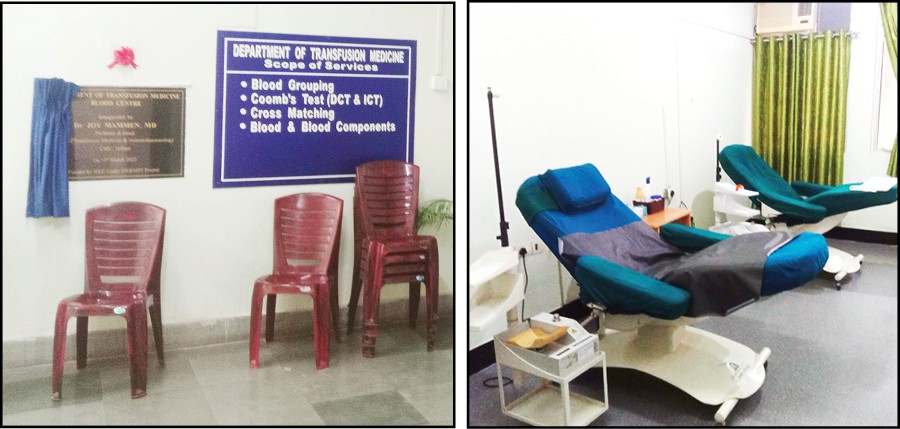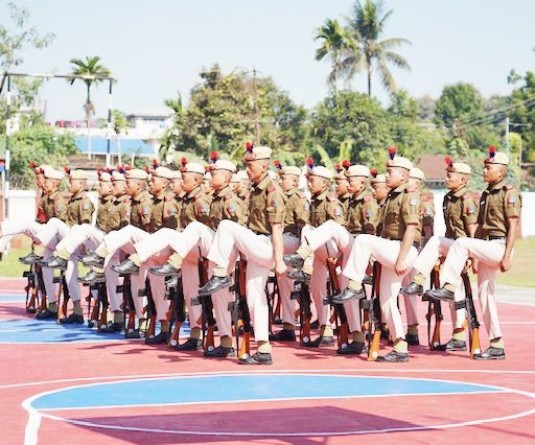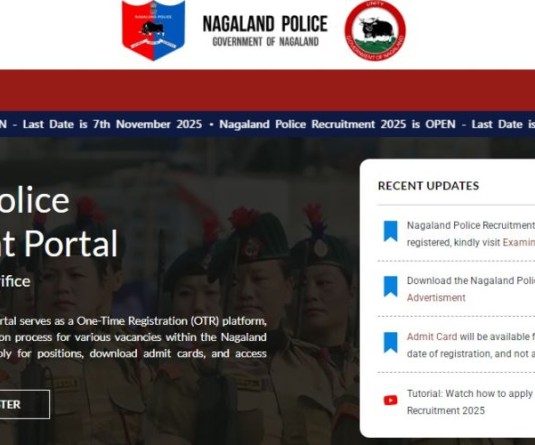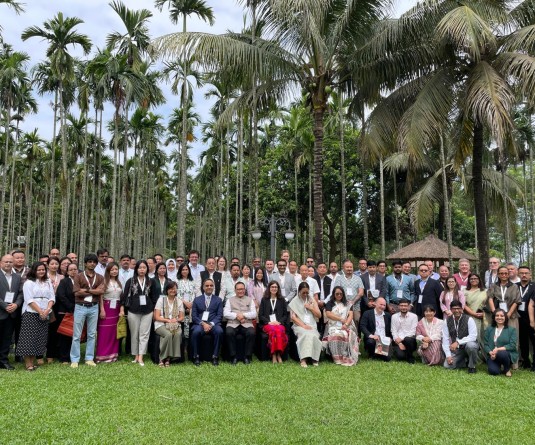The Blood Centre at CIHSR, Dimapur, which was inaugurated on March 19. (Morung Photo)

Only the 4th hospital in Nagaland to have a functional one
Morung Express News
Dimapur | March 19
The Christian Institute of Health Science & Research (CIHSR), Dimapur, now has an in-house blood centre. The Blood Centre which is already operational, was formally inaugurated by Dr Joy Mammen, MD, Prof and head of Transfusion Medicine & Immunohaematology, CMC, Vellore on March 19.
The nod of approval to set up the facility was received earlier on February 8 following inspections from the Central and state authorities last year. It was the culmination of more than ten years of effort to get the sanction of the licencing authorities.
This is only the fourth functional blood centre in Nagaland and the second for Dimapur district. The other three are government-run, attached to the District Hospitals in Dimapur, Kohima and Mokokchung.
The Blood Centre at CIHSR can store up to 300 units of RBC and whole blood and up to 1000 units of FFP (Fresh Frozen Plasma) in a day. According to the Centre’s Technical Supervisor, KG Gaikhonlungpou, the storage capacity is fine for the time being. But given that Nagaland has only a few such centres at present, it would only bode well for everyone, if it is enhanced.
It can collect, store, and prepare various blood components and is open 24/7, while the window for blood donation is from 8:00 am-4:00 pm. It plans to introduce apheresis procedure and to further develop the CIHSR Blood Centre as a referral centre for training of blood centre technologists and doctors for Nagaland. Apheresis is a process/device, which separates blood into its various components like the conventional separators. Unlike the latter, the process has the capability to isolate and extract only the targeted component required by a patient, while returning the other components to the donor. This process requires the donor to be intravenously linked to the machine for the transfusion cycle to complete.
According to Dr Mammen, a facility like the blood centre is where the medical sector and the community come together to contribute to the society at large. He said that it is like a “triangular relationship” or process, involving the blood centre with blood on the shelf for emergency, blood donors and the medical department or facility, “which is essential to the success of a blood centre.”
He remarked, “Many people in the community have this idea that once you give blood it stays there (blood centre) forever. But blood has a shelf life,” implying the significance of donors.
CIHSR Director, Dr Sedevi Angami termed the establishment of the blood centre as a major milestone, while recalling how the CIHSR once tried to establish one some ten years ago but was unsuccessful. Emphasising the importance of laboratory services, he held that it is one area that has been ignored by the government in India. As far as Nagaland was concerned, he called for stronger collaboration between the government and the private sector to improve laboratory standards.






